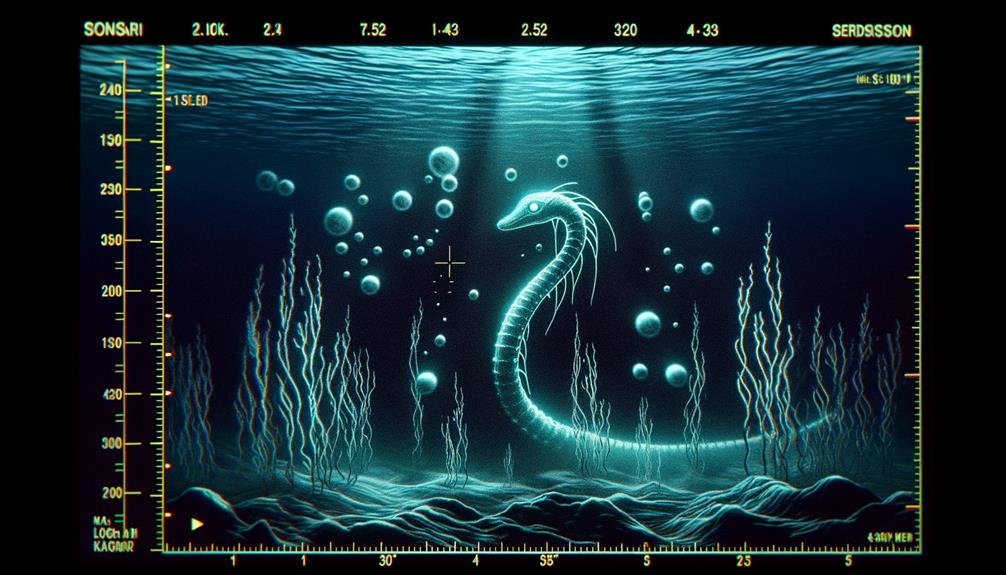Let's take a step back in time. Imagine, if you will, that we're medieval scribes unrolling an old scroll, diving into the fascinating story of the Loch Ness Monster. Now, this isn't just any monster. This is Nessie, a creature that's been the centre of folk tales and rigorous scientific investigation for hundreds of years.
We're going to look closely at this tale, examining the countless sightings and efforts to disprove Nessie's existence, all while checking out her influence on pop culture. From the depths of a dark, shadowy loch to the glaring lights of Hollywood, Nessie continues to grip the world's imagination. What secrets are hiding beneath the waters and the layers of folklore? Come along for this thrilling deep dive into a mystery that's stood the test of time.
Origin and Sightings of Nessie

Let's talk about the origins and sightings of the Loch Ness Monster, or as many fondly know her – Nessie. Our journey takes us all the way back to the seventh century, where the earliest written record of this fascinating creature shows up in a biography of Saint Columba. This Scottish tale, deeply rooted in mythology and folklore, has fed the curiosity of many throughout the ages. Yet, it's still wrapped in a veil of mystery.
It was Aldie Mackay's sighting in the 1930s that catapulted Nessie into the world's attention, sparking a lively discussion and curiosity. This led to an increase in people claiming to have spotted the monster, culminating in the infamous Surgeon's Photo, which supposedly showed the renowned Loch Ness Monster in all her majesty. However, in an unexpected turn of events, this famous image was later exposed as a hoax.
As curiosity about Nessie grew, the Loch Ness Centre and the Loch Ness Investigation Bureau came into being. They committed to finding out the truth behind this mythical beast. Despite in-depth research and numerous explorations, there's yet to be any hard proof to confirm the existence of Nessie, the cherished monster of Loch Ness.
Notable Loch Ness Investigations
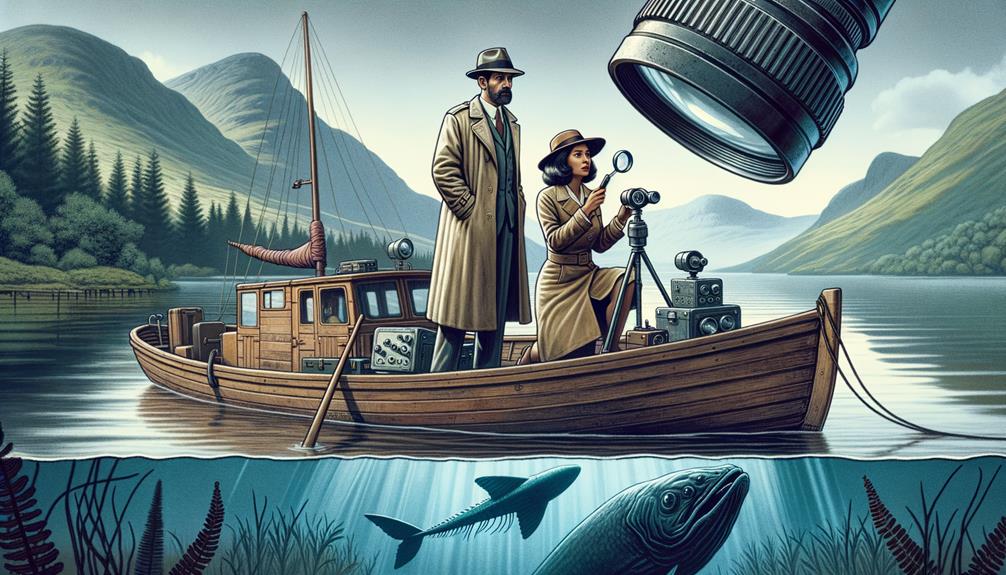
The enigma that is the Loch Ness Monster, often referred to as Nessie, has been a source of fascination for many. The real meat of this ongoing mystery, however, is rooted in the countless scientific studies undertaken in a bid to solve this age-old puzzle. A notable study was spearheaded by Prof Neil Gemmell from the University of Otago in New Zealand. His team set out to gather water samples from Loch Ness for an in-depth analysis of environmental DNA. This type of DNA is left behind by creatures as they pass through the water, potentially offering clues about their existence.
What they found was rather intriguing. There was no DNA evidence to suggest the presence of a large, unknown creature in Loch Ness, debunking theories about a prehistoric monster. Instead, they detected an unusually high concentration of eel DNA. Without any definitive proof, it's hard to say whether these eels are enormous, but it's a theory that shouldn't be ruled out.
Past studies using sonar technology to detect large, unidentified objects have raised eyebrows but failed to produce solid evidence. It appears that Loch Ness is still holding on to its secrets, leaving us with more questions than we have answers for. Even in the absence of clear-cut evidence, the appeal of the Loch Ness Monster remains strong, its popularity stoked by the allure of mystery, folklore, and a sense of curiosity.
Ensuring a smooth flow in your writing can be more effective than relying on traditional transition words or phrases. Instead of simply stating that something is 'important' or 'essential,' providing context as to why it's significant can make the content more engaging for the reader. Hyperbole can detract from the credibility of an article; it's better to stick to the facts and back up claims with evidence where possible. Using an active voice can make your writing clearer and more direct. Lastly, remember who your audience is and adjust your language accordingly.
Scientific Explanations and Theories
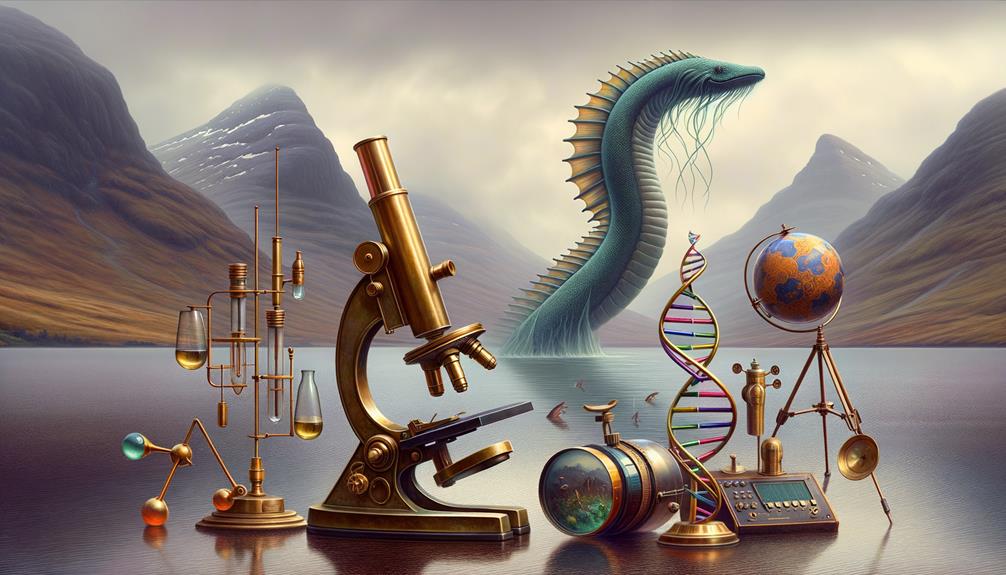
In the fascinating world of science, the puzzle of the Loch Ness Monster has been approached with cutting-edge methods, like sonar scans and DNA studies. Neil Gemmell, a scientist from the University of Otago in New Zealand, spearheaded a thorough DNA study of Loch Ness's inhabitants. The discoveries we've made point towards an unexpected candidate – eels.
Adrian Shine, a seasoned investigator of the Loch Ness phenomena, backs this idea. He points out the plentiful population of eels in Loch Ness. If this creature does exist, we haven't discovered its scientific name yet. However, based on the DNA findings, it's plausible that huge eels may be living in Loch Ness.
Here's a handy summary of our research:
| Method Used | Main Researcher | Results |
|---|---|---|
| Sonar Scans | Adrian Shine | Not Definitive |
| DNA Study | Neil Gemmell | Eel DNA Found |
| Picture Review | Various | Mostly False Claims |
| Witness Accounts | N/A | Not Trustworthy |
| Species Research | Various | No Big Unknown Creatures |
Ultimately, the Loch Ness Monster continues to be a mystery. But with the help of science, we're getting closer to understanding the legend.
Hoaxes and Misidentifications
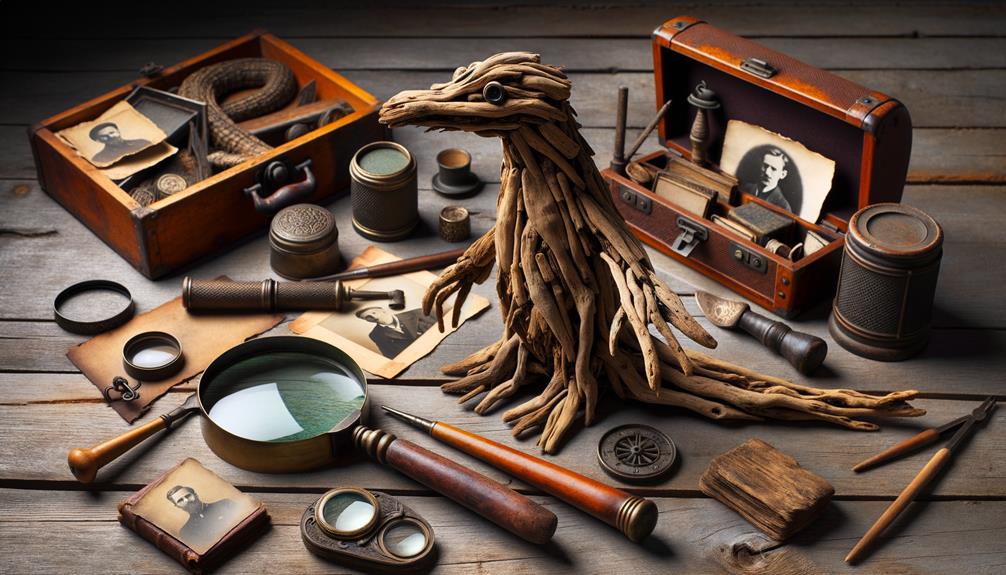
The lore of Loch Ness is clouded with numerous hoaxes and cases of mistaken identity, which often casts a shadow of doubt on the existence of the famed creature. The well-known 1934 photo, dubbed the 'surgeons photograph', taken by Robert Kenneth Wilson, ignited the monster hunt. However, it was later revealed to be a hoax by Sir Peter.
Still, the allure of the Loch Ness mystery persists, perhaps buoyed by such stories. Some notable instances include:
- The 'Nessie footprints' of Marmaduke Wetherell, proven to be an ingenious ruse.
- The Wilson's photo that sparked much attention but was eventually exposed as a hoax.
- The wave of supposed sightings, frequently chalked up to mistaken identity.
- The economic boost Nessie brings to Scottish tourism, ensuring the legend remains alive.
- The DNA survey suggesting the presence of giant eels, adding another layer of complexity to our monster hunt.
These situations, deeply embedded in Scottish folklore, have added to the uncertainty surrounding the Loch Ness Monster. By getting to grips with these hoaxes and cases of mistaken identity, we can better separate fact from fiction in this fascinating story.
Influence on Popular Culture
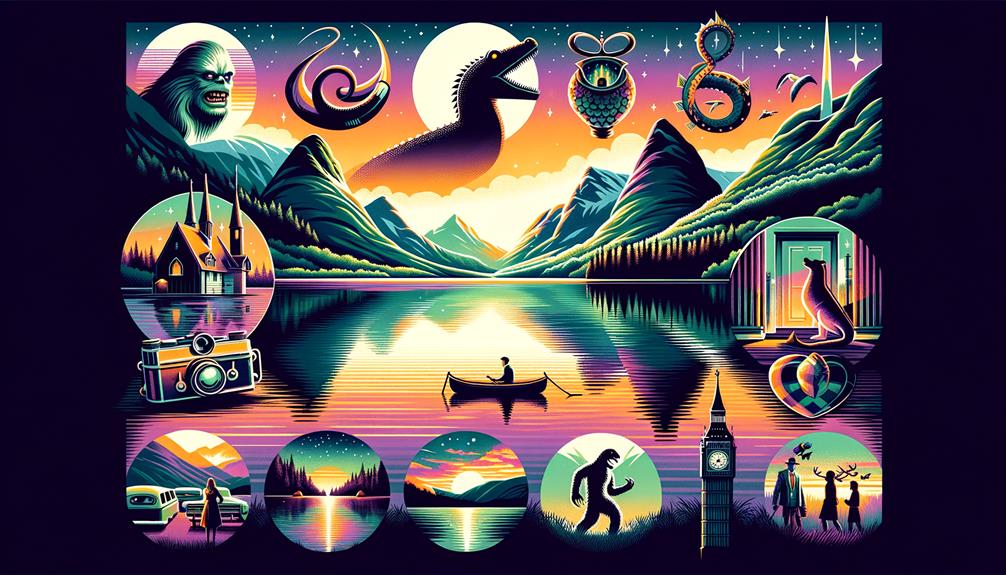
The Loch Ness Monster has made quite a splash in pop culture, with plenty of books, movies, TV series, and documentaries chronicling its legend. This modern-day tall tale has turned Loch Ness into a hot tourist spot. Although there's no solid proof of the creature's existence, the story still draws people in and boosts Scotland's economy.
Media has played a major role in keeping the myth alive, from the first report in the Inverness Courier to the notorious 'Surgeon's photograph of the monster' published in the Daily Mail. TV also stepped into the fray with a Channel documentary called 'Private Life of Sherlock' that revolved around a hunt for the creature.
The Loch Ness Monster's impact on pop culture goes way beyond Scotland. Despite the lack of hard evidence, interest in the creature refuses to wane. This enduring curiosity is a testament to our fascination with the unknown and the irresistible draw of a good mystery. The Loch Ness Monster is so much more than a mythical beast supposedly lurking in a Scottish lake; it represents our collective thirst for the mysterious and uncharted.
Frequently Asked Questions
What Is the Meaning of Loch Ness?
Did you know 'Loch Ness' translates to 'Lake Ness' in Scottish Gaelic? It's a vast lake, filled with fresh water, tucked away in the Scottish Highlands. But, Loch Ness is more than just a home for legendary monsters. It's also a stunning spectacle of natural beauty that's teeming with a diverse range of wildlife. It truly is a sight to be seen!
Is the Loch Ness Monster Is the National Animal of Scotland?
Contrary to what some might believe, Scotland's national animal isn't the Loch Ness Monster. Interesting as it may be, this legendary creature doesn't hold that title. Instead, Scotland's national emblem is the unicorn – a mythical animal known for its purity and power. Although the Loch Ness Monster has certainly captured our imaginations, it hasn't received the same official stamp of recognition.
Why Do Thousands of People Visit Loch Ness Every Year?
Every year, Loch Ness draws in a crowd by the thousands. What's the appeal? It's a mix of breathtaking views and rich history. Yet, the real star of the show is the fabled Loch Ness monster. Even though its very existence is a topic of debate, the mystique surrounding this legendary beast keeps visitors coming back for more.

